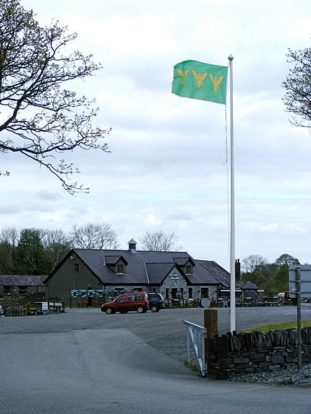Caernarfonshire (Sir Gaernarfon) is a maritime county in north Wales. A large proportion of the population is Welsh-speaking. The county may be reckoned to have three distinctive areas: the coastal lands (Arfon and the coast to the River Conwy), Snowdonia and the Llŷn Peninsula.
The name of Arfon comes from its position opposite the Isle of Anglesey (Môn). Here the land is a flat, coastal plain. The county town, Caernarfon, is renowned for and dominated by Caernarfon Castle (Cadw). This great stone castle built by King Edward I stands on the shore, one of the most complete mediæval castles in Britain. Caernarfon has a small harbour, and a beach. Its location gives a lovely view across the Menai Strait to Anglesey.
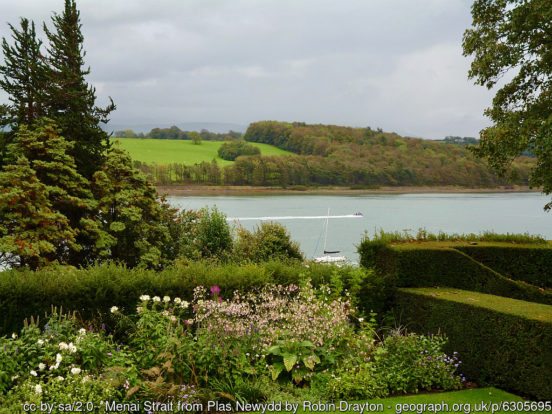
The small city of Bangor lies near the eastern entrance to the Menai Strait, beneath the shadow of Bangor Mountain. In the nearby village of Llandegai stands Penrhyn Castle (NT), a Victorian idea of a Norman castle. Inland, the small town of Bethesda grew around the slate and stone quarrying industry. The town was named after the Bethesda Chapel and is noted for the number of its chapels, mostly dating from the 1904-1905 Welsh Revival.
At the north-east of the county lies the walled town of Conwy. Conwy Castle (Cadw) and the town walls were built on the instruction of King Edward I between 1283 and 1289 as part of his subjection of North Wales. The town’s mediæval walls are a rare survival. Aberconwy House (NT) is Conwy’s only surviving 14th-century merchant’s house. Plas Mawr (Cadw) is an Elizabethan house refurbished extensively to its original 16th-century appearance.
Llandudno, on the flat land between the Great Orme peninsula and the mainland, was developed as a resort in the 19th century. The Great Orme is a limestone headland punching out into the Irish Sea. The Great Orme Tramway takes tourists to the summit. The Marine Drive runs around its edge.

The east of the county is part of Vale of Conwy with the River Conwy forming most of the Denbighshire border. The Roman fort of Canovium was built at an ancient crossing of the river. Its remains surround the 14th-century church of St Mary in the village of Caerhun. The village of Trefriw was a major port which became a fashionable Edwardian resort. The Fairy Falls are a popular beauty spot.
South of Trefriw, Gwydir Castle is a c.1500 fortified manor house set within a Grade-I listed garden. The delightful village of Betws-y-Coed lies where the Conwy is joined by the rivers Llugwy and Lledr. The famous Swallow Falls cascade down the Llugwy. In the Wybrant Valley lies Tŷ Mawr Wybrnant, birthplace of Bishop William Morgan, the first translator of the Bible into Welsh.
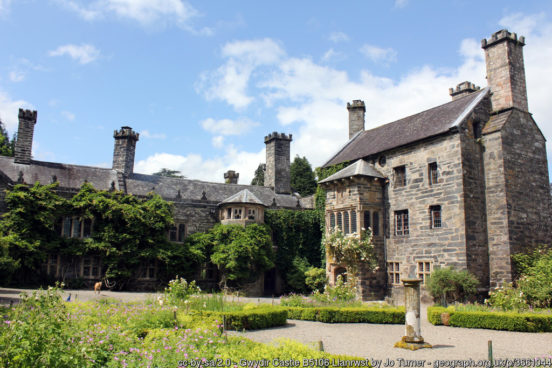
Snowdonia (“Yr Eryri”) is the name given to the massif spread across the heart of Caernarfonshire. It includes the ranges of Snowdon and its satellites, the Glyderau, the Carneddau and the Moel Siabod group. All of the mountains over 3,000 feet in Wales are in Caernarfonshire. Snowdon is the highest mountain in Wales and one of the traditional Seven Wonders of Wales. This is very popular walking country, none more so than Snowdon itself, both for popular visitors and for more serious hikers. The Snowdonia National Park includes a much wider mountain area of Caernarfonshire and Merionethshire.
Beyond Snowdonia westwards, the unspoilt Llŷn peninsula extends 30 miles into the Irish Sea. It is a place of timeless beauty of sea and land. Llŷn is dominated by numerous hills and mountains formed by ancient volcanoes. Large stretches of the northern coast consist of steep cliffs and rugged rocks with offshore islands and stacks. There are more extensive sandy beaches on the southern coast, such as Porth Neigwl and Castellmarch Beach. The landscape is divided into a patchwork of fields, with the traditional field boundaries, stone walls, hedgerows and cloddiau. Llŷn was immortalised by the poet and minister R S Thomas, who served for many years as the Vicar of Aberdaron, Llŷn’s westernmost parish.
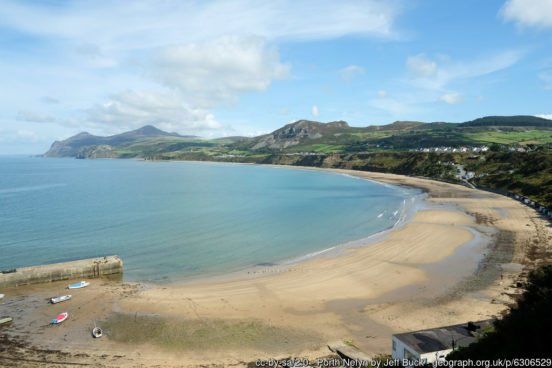
Pwllheli grew around the shipbuilding and fishing industries but, after the construction of the railway in 1867, it became a resort town. Butlin’s established a holiday camp at nearby Penychain in 1947. Tourism is now a major industry across the Llŷn. Criccieth is a resort town famous for Criccieth Castle (Cadw), constructed by Llywelyn the Great but heavily modified following its capture by Edward I. Porthmadog developed in the 19th century as a port for slate, but has become a shopping centre and tourist destination.
Plas yn Rhiw (NT) is an early 17th-century manor house in Y Rhiw near the tip of the Llŷn. Off the tip of the Llŷn, Bardsey Island is steeped in religion and holy traditions. The first monastery on the island was established before AD 542, and it became a major centre of pilgrimage during mediæval times.
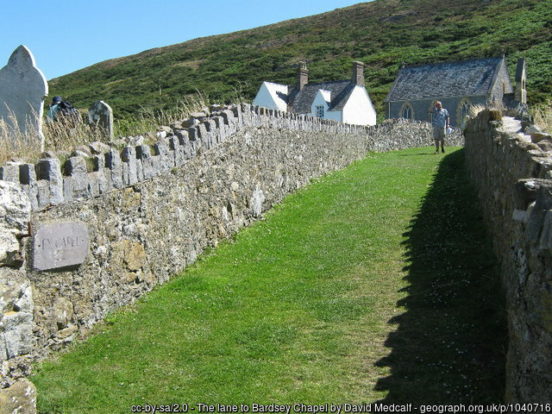
The region was divided into three cantrefs (Arllechwedd, Arfon, and Llyn) in the early Middle Ages. The cantrefs then became part of the principality of Gwynedd, ruled by the prince of Aberffraw and lord of Snowdon. Following his conquest of Wales in 1282–83, Edward I annexed to the English crown the principality of Llywelyn ap Gruffydd and divided it into Caernarfonshire, Merionethshire and Anglesey under the Statute of Rhuddlan 1284. The Caernarfonshire flag, three eagles arranged in fess on a green field, are the reputed arms of Owain ap Gruffudd (1100 – 1170) who was King of Gwynedd from 1137 until 1170. Known as Owain Mawr (“Owain the Great”) he was the first to be styled “Prince of Wales”. The Caernarfonshire units at Agincourt (1415) are reputed to have fought under a banner of three golden eagles on green in honour of Owain. Caernarfonshire Day is celebrated on 28th November, the date of Owain’s death.
